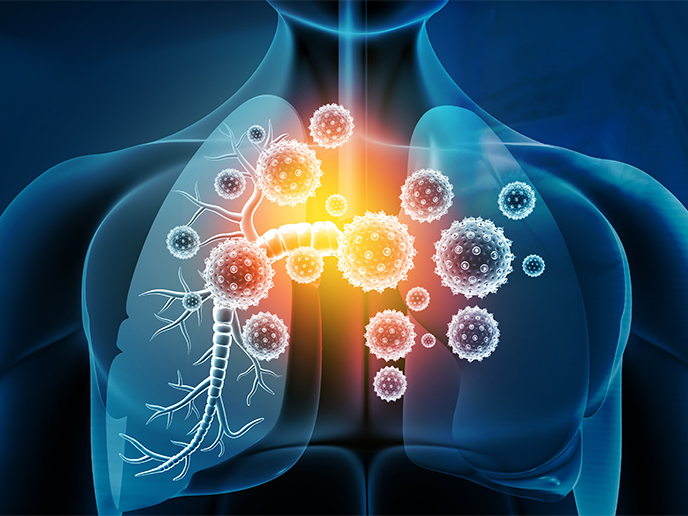Pitting bacteria against bacteria in the fight against lung infections
Researchers supported by the EU-funded MYCOCHASSIS and MycoSynVac projects have engineered the first live bacteria to treat lung infections. This living medicine targets a bacteria called Pseudomonas aeruginosa that is resistant to nearly all antibiotics and the frequent cause of hospital infections. As explained in the study published in the journal ‘Nature Biotechnology’, the research team modified a human lung bacterium called Mycoplasma pneumoniae to treat ventilator-associated pneumonia (VAP). VAP has a high hospital mortality when associated with the antibiotic-resistant P. aeruginosa. The engineered M. pneumoniae is used together with low doses of antibiotics that would be ineffective on their own.
High effectiveness, no toxicity
The engineered bacterial treatment proved to significantly reduce lung infections when tested on mice, increasing their survival rate. The researchers also observed no adverse clinical symptoms from the treatment, suggesting that a single high dose of M. pneumoniae was effective without any toxicity. Additionally, the immune system gradually cleared the modified bacterium once the treatment was over. Why are P. aeruginosa infections difficult to treat? As described in a news item posted on the website of the Centre for Genomic Regulation (CRG), Spain, it is because P. aeruginosa bacteria live in communities that form biofilms, creating impenetrable structures that cannot be breached by antibiotics. Biofilms can attach themselves to the surfaces of endotracheal tubes used on critically ill patients who need mechanical ventilators to breathe. This causes VAP, which occurs in up to 27 % of such patients. But the picture gets worse for intubated COVID-19 patients, more than half of whom contract VAP. The researchers engineered M. pneumoniae to dissolve biofilms. When tested on P. aeruginosa biofilms taken from the endotracheal tubes of patients in intensive care units, the treatment penetrated the barrier and successfully dissolved the biofilms. “We have developed a battering ram that lays siege to antibiotic-resistant bacteria. The treatment punches holes in their cell walls, providing crucial entry points for antibiotics to invade and clear infections at their source. We believe this is a promising new strategy to address the leading cause of mortality in hospitals,” states study co-corresponding author Dr María Lluch of the CRG. M. pneumoniae’s effectiveness in fighting lung infections shows that new strains of bacteria could be created to deal with respiratory diseases such as asthma or lung cancer. “The bacterium can be modified with a variety of different payloads – whether these are cytokines, nanobodies or defensins. The aim is to diversify the modified bacterium’s arsenal and unlock its full potential in treating a variety of complex diseases,” remarks co-corresponding author Dr Luis Serrano, Director of the CRG, which is project coordinator for both MYCOCHASSIS (Engineering of a minimal bacterial therapeutic chassis) and MycoSynVac (Engineering of Mycoplasma pneumoniae as a broad-spectrum animal vaccine). The researchers aim to carry out more tests before reaching the clinical trial phase. For more information, please see: MYCOCHASSIS project MycoSynVac project website
Keywords
MYCOCHASSIS, MycoSynVac, lung, Pseudomonas aeruginosa, biofilm, bacteria, lung infection, Mycoplasma pneumoniae, antibiotic



